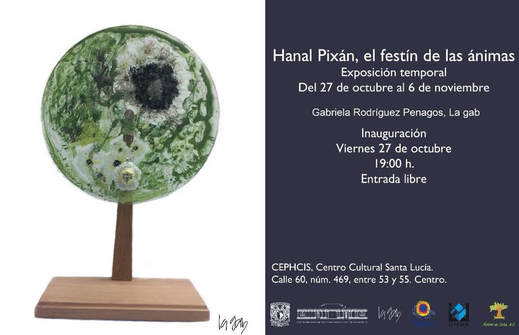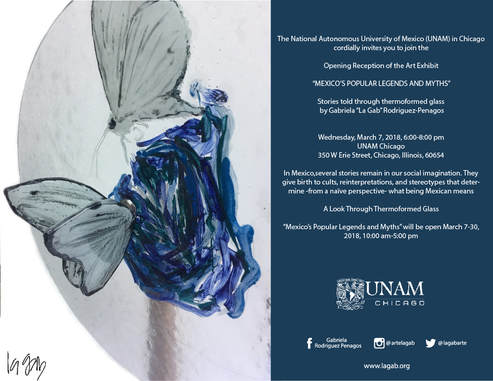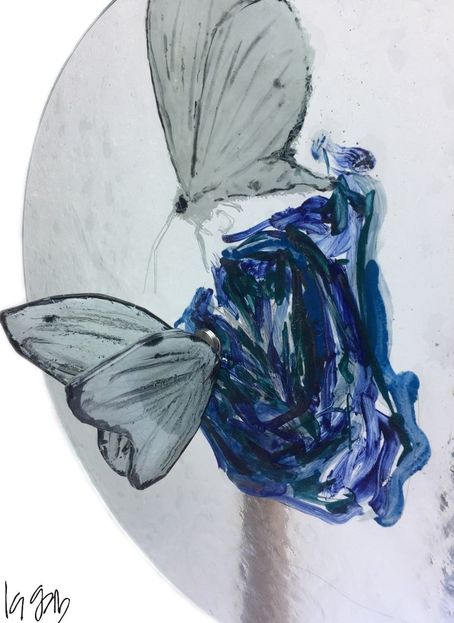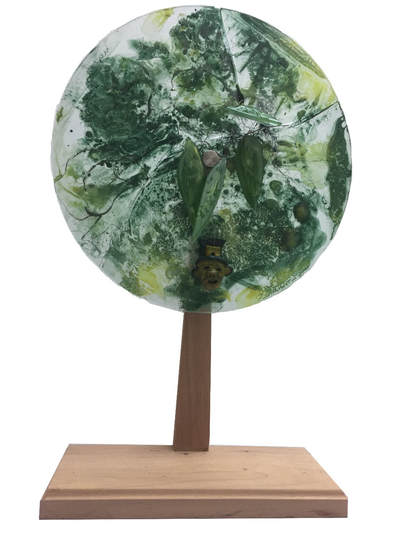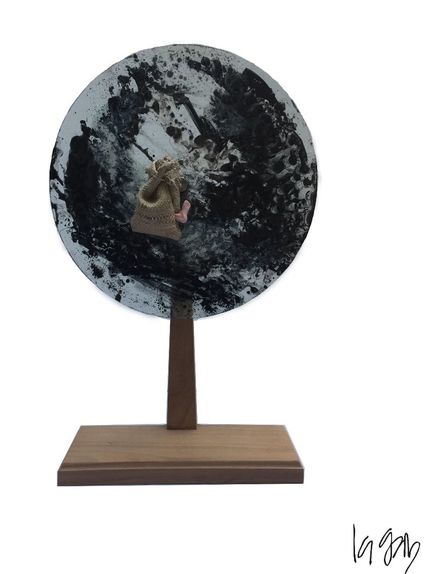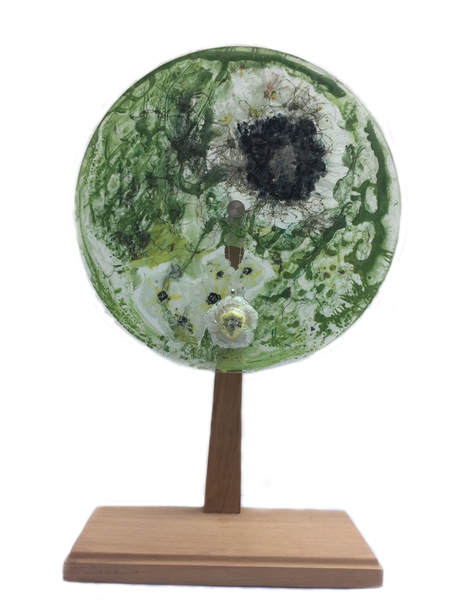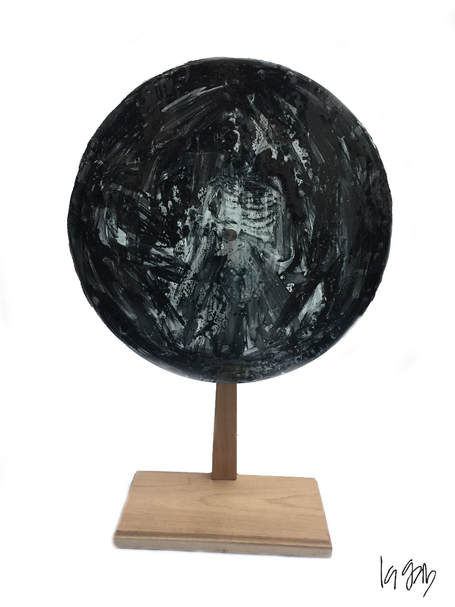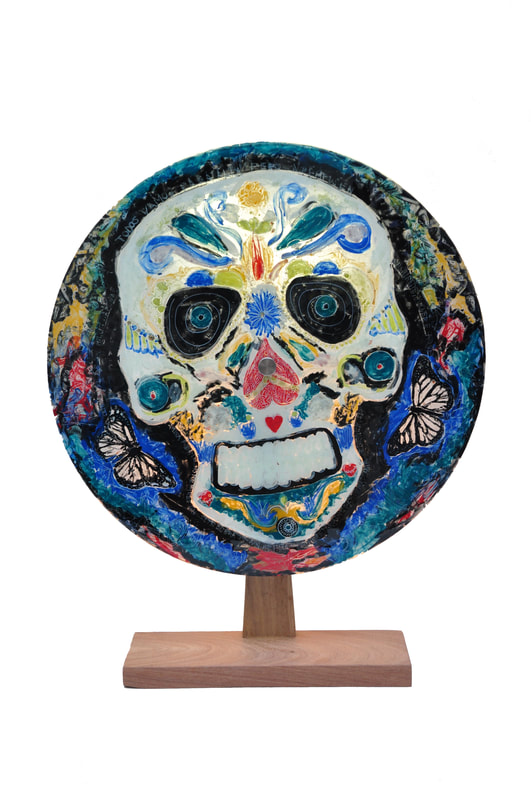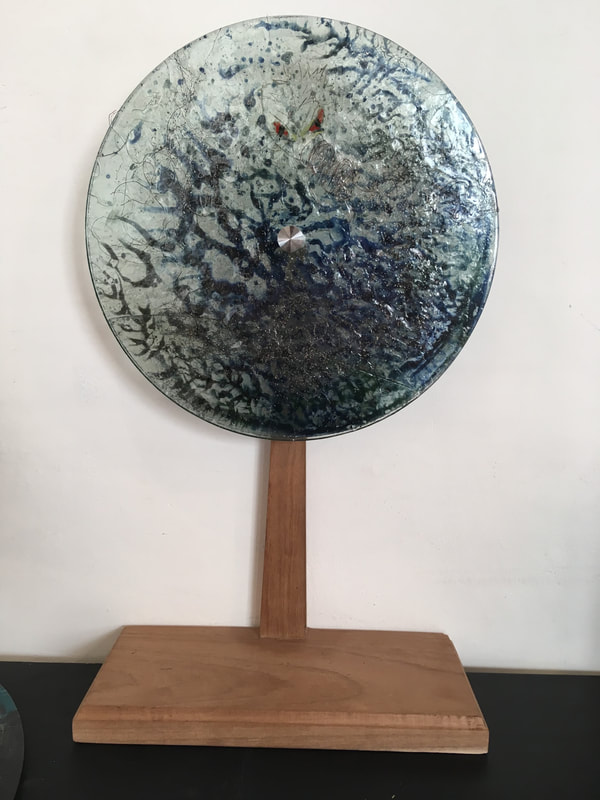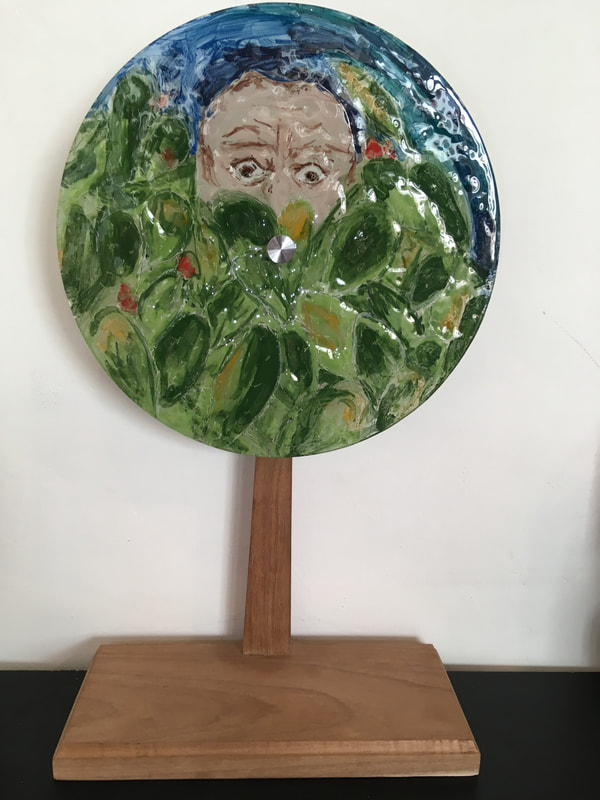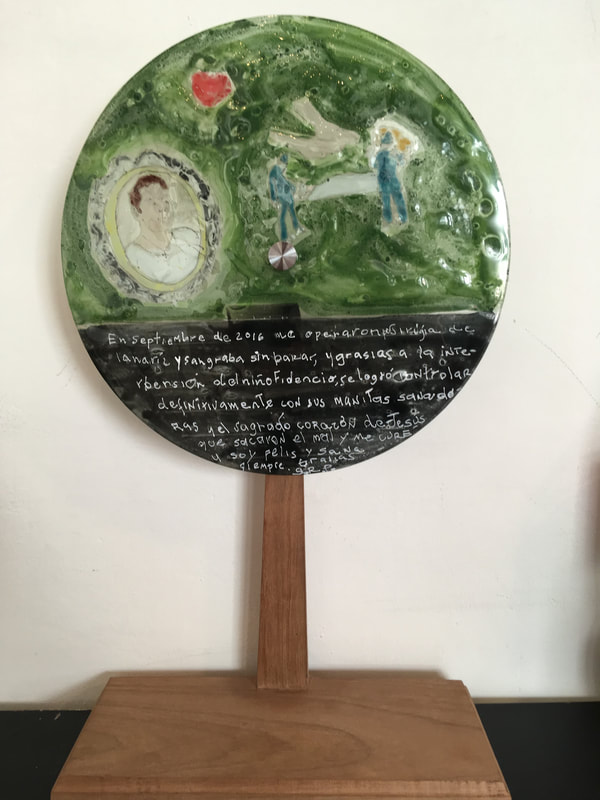|
ITZPAPÁOTL Y LAS MARIPOSAS
Para algunos las mariposas son un símbolo del paso de las almas de los guerreros muertos por la morada celeste del Sol. Después de cuatro años, regresan a la tierra en forma de coloridas mariposas que visitan a los familiares y los protegen de cualquier mal. “es la tierra personificada en su maternidad; en su regazo abarca a los vivos y a los muertos: para nutrir a los primeros, para transformar a los segundos”. Miguel León- Portilla ALUXES En la mitología maya, los Aluxes son seres mágicos y traviesos que viven con sus perros en los bosques y en las cuevas. Son descendientes del Enano de Uxmal y como él, también fueron creados a partir del barro mezclándolo con miel y con flores. Estos seres nocturnos son semejantes a los niños y cuidan la cosecha como duendes de las siembras y del bosque. EL SEÑOR DEL COSTAL Es un mito urbano contemporáneo, creado con el objetivo de asustar a los niños y motivarlos a regresar a casa antes del anochecer. Supone que el aterrador personaje sale a las calles cuando llega la oscuridad en busca de niños rebeldes y desobedientes y se los lleva metiéndolos en un costal que carga en la espalda. XÓLOTL Con forma de perro, en la mitología tolteca el Xólotl ayudaba a los muertos a cruzar el río que los llevaría a Mictlán (Ciudad de los muertos). Era concebido como Dios del inframundo o para los aztecas el Dios del Fuego, que reviviría a los muertos. Es el gemelo de Quetzalcóatl y tuvo varias transformaciones para huir de su propia muerte y burlarla. LA MUJER DE XTABAY Cuenta la leyenda maya que en Mayapán vivían dos mujeres; Xkeban que era muy hermosa y dedicaba su vida a seducir y entretener a los viajeros; y también a rescatar a animales sin cobijo abandonados por considerarse inútiles. Cerca de ahí vivía otra mujer, Utz- Colel quien era decente y muy limpia, pero fría y dura de corazón y sentía repugnancia por los pobres. Al morir Xkeban, su cuerpo despidió un perfume aromático y seductor. Utz-Colel por el contrario, despedía aromas pestilentes. De la tumba de la primera comenzaron a nacer las flores de Xtabentún que son muy aromáticas y de la tumba de Utz- Colel unas flores lindas, pero sin olor alguno. LA LLORONA Esta historia se origina en la Nueva España. Refiere a un hombre español que se enamora profundamente de una mujer indígena y juntos y procrean felizmente a tres hijos. La unión fue mal vista por la elitista sociedad de esa época y el hombre presionado por la misma, abandona a la mujer, quien desesperada ahoga a sus tres hijos en el río. Cuenta la leyenda que su alma en pena llena de arrepentimiento llama a sus hijos por las noches. |
ITZPAPÁOTL AND THE BUTTERFLIES
To some, butterflies symbolize the passage of the dead warriors’ souls through the Sun’s celestial dwelling. After four years, they return to Earth in the shape of colorful butterflies to visit their families and to provide them protection against evil. “it is the Earth embodied in her motherhood; she embraces the living and the dead: to nourish the first, to transform the latter”. Miguel León- Portilla ALUXES In Mayan mythology, the Aluxes are magical and mischievious beings that dwell in woods and caves accompanied by their dogs. They descend from the Dwarf of Uxmal, and like him, were created from clay mixed with honey and flowers. These nocturnal childlike creatures, take care of the harvest and the forest. THE OLD MAN WITH THE SACK This is a modern urban legend. It was made up to scare kids so they came home before sunset. This scary figure comes out at night lurking for disobedient kids and trapping them into a sack he carries on his back. XÓLOTL In toltec mythology, this dog shaped god, helped the Dead cross the river that would lead them to Mictlán, the City of the Dead. Known as the God of the Underworld or God of Fire to Aztecs, a god that was thought to revive the Dead. He is Quetzalcóatl’s twin and the legends say that he changed his shape many times trying to trick his own death. THE WOMAN OF XTABAY The mayan legend of Xtabay tells the story of two women who lived in Mayapán. One was Xkeban and the other was Utz-Colel. Xkeban was very beautiful and spent her days seducing and entertaining passersby; she had a good heart and took care of abandoned animals. Utz-Colel lived nearby; she was good and decent, but cold at heart and felt disgusted by the poor. One day Xkeban died and her body released an alluring and delicate perfume. And from her grave beautiful flowers were born. These aromatic flowers were named Xtabentún. Utz-Colel was very envious. She couldn’t believe that such a delicious perfume could come from her promiscuous neighbor. When she died, she was remembered by her honesty, but the villagers were amazed that a horrible stench came from her grave and instead of beautiful flowers, a cactus, the Tzacam, with a disagreeable odor grew there. Turned into a Tzacam, Utz-Colel reflected on both destinies and decided to imitate Xkeban, without realizing that everything Xkeban did, did out of love and kindness. Utz-Colel, invaded by envy, returned to the world to seduce men. She did this without the love and grace of Xkeban; and this is how she became the Xtabay, the female ensnarer, who seduces and kills men under the ceiba tree. THE WEEPING WOMAN Originated in New Spain this is the story of a native woman left by her Spanish lover. He was deeply in love with her, and they had three children. They were happy, but they were not accepted by the elitist society of the time, so the man left his family. The woman, in despair, drowned their children in a river. The legend says that her grieving soul full of regret cries and shouts at night calling for her children. |
PARA LA EXPOSICIÓN EN UNAM CHICAGO EN 2018, SE SUMARON 4 PIEZAS NUEVAS A LA COLECCIÓN:
|
EL MITO DE LA MUERTE
Parte del ciclo de la naturaleza y del genesis de la creación del mundo para varias culturas prehispánicas en México, la muerte es celebrada hoy el 2 de noviembre, fecha en la que se recuerdan a los seres queridos, ofreciendo comida, juguetes y dulces para ser consumidos durante la noche. A cambio, las almas satisfechas deberán de cuadarnos durante el resto del año. Mas adelante, la muerte fue representada por el caricaturista Jose Guadalupe Posadas, dentro de la critica y burla de la sociedad clasista de la época, como una alegre calavera, un símbolo muy mexicano que a veces es difícil de comprender por los no mexicanos. EL CHUPACABRAS Aún y cuando la leyenda del chupacabras nace en Puerto Rico, es ampliamente desarrollada por México. Es concebida como la bestia chupa-sangre de los años noventas a la que se le atribuyen muertes misteriosas, tanto de niños como de animales. Se le identifica con seres de formas diversas, incluso cambiantes, dependiendo de las voces de los protagonistas. La descripción más frecuente es la de un ser de piernas cortas, de poco mas de un metro, que avanza grandes distancias debido a sus amplias garras y alas con forma de murciélago. Tiene clavos en la espalda y los ojos rojos. EL TIGRE DE SANTA JULIA El Tigre de Santa Julia es un joven militar que se torna delincuente cuando abandona el ejército. Fue conocido por el robo a la Hacienda de Aragón y la oficina de correos; y por numerosos homicidios y confrontaciones con la policía. Se ganó el apodo de “el Tigre” por su habilidad de escapar y eludir a la policía. La fama del Tigre lo tornó de delincuente común a rebelde social y opositor político, pero este personaje se convierte en leyenda, cuando en 1906, por un complot entre Guadalupe Guerrero (su amante) y la policía, fue arrestado mientras se encontraba en una nopalera defecando. NIÑO FIDENCIO Al finalizar la revolución, surje la figura del curandero ecléctico José Fidencio Síntora Constantino, mejor conocido como el Niño Fidencio (1898-1938). Sus prácticas dentro del proceso de reconstrucción nacional, representan una esperanza que contrasta con las endebles instituciones sanitarias post revolucionarias. Fidencio fue llamado “niño” porque “creció y quedó chiquito” y hablaba con voz de niño. Fue muy popular y el entonces presidente Plutarco Elias Calles inclusó se sometió a sus métodos curativos, mismos que incluían cubetazos de agua, tomatazos y huevo, e incluso se dice que trepaba a los árboles y aventaba fruta a los dolientes. La Iglesia Fidencista aglutina a la fecha a sus seguidores. |
THE MYTH OF THE DEATH
Death is a part of the genesis and nature´s cycle of life for many of the pre hispanic cultures. It is celebrated on November, the 2nd each year, when food, candy and toys are offered during the night in exchange of care and security for the living on the rest of the year. Death was represented by cartoonist José Guadalupe Posadas as a mockery and as a critic view of the clasist mexican society in the beggining of the 20th Century, also as a joyful skull, sometimes hard to understand for the non mexicans. THE CHUPACABRAS This is a modern legend originated in Puerto Rico in the 90’s that became worldwide famous. Mexico embraced this legend and owns most of the supposed sightings. The Chupacabras is a mysterious beast that attacks animals in rural and farming areas. Some stories say that children were attacked too. The shape of this creature varies depending on the witnesses. The most frequent description is of a little heavy figure with short legs, big claws and bat like wings. It has nails on its back and scary red eyes. THE TIGER OF SANTA JULIA José de Jesús Negrete was a soldier and later a bandit during Porfirio Diaz’s term. He won his nickname due to his ability to outrun the police. He took part in many robberies with his gang; his most famous heist was to the Hacienda de Aragón. After many altercations with the police, he was caught and arrested while he was shitting under a nopal tree. The way he was arrested became a popular saying: “he was caught like the tiger of Santa Julia”, meaning he was caught in fragranti. NIÑO FIDENCIO Niño Fidencio, José de Jesús Constantino Síntora, was a famous Mexican curandero. He is one of the most popular unofficial saints. He made a huge number of followers during the Mexican Revolution due to his gift of healing people. It is said that he used to perform surgery without any kind of medical equipment and caused his patients no pain; other methods consisted on throwing buckets of water, tomatoes or eggs to the patient. He also provided cures related to specific parts of town, such as a pepper tree which the congregation threw offerings around, and a mud puddle in which his followers bathed. He made disabled people walk again and blind people see. He is even said to have been able to cure Mexican president Plutarco Elías Calles's leprosy. |

